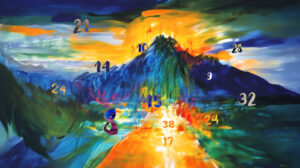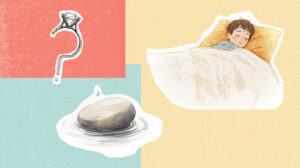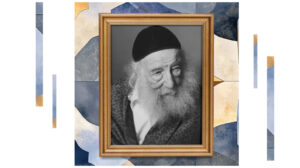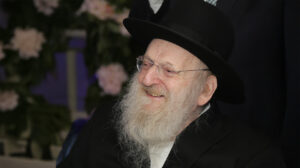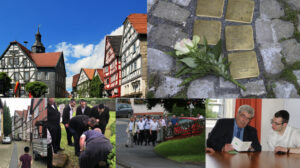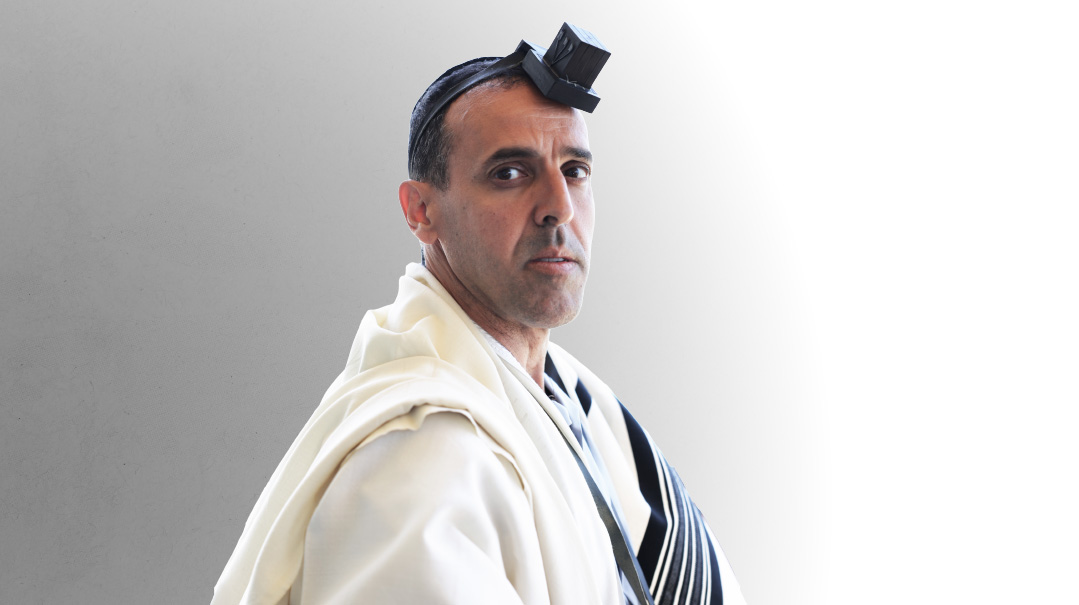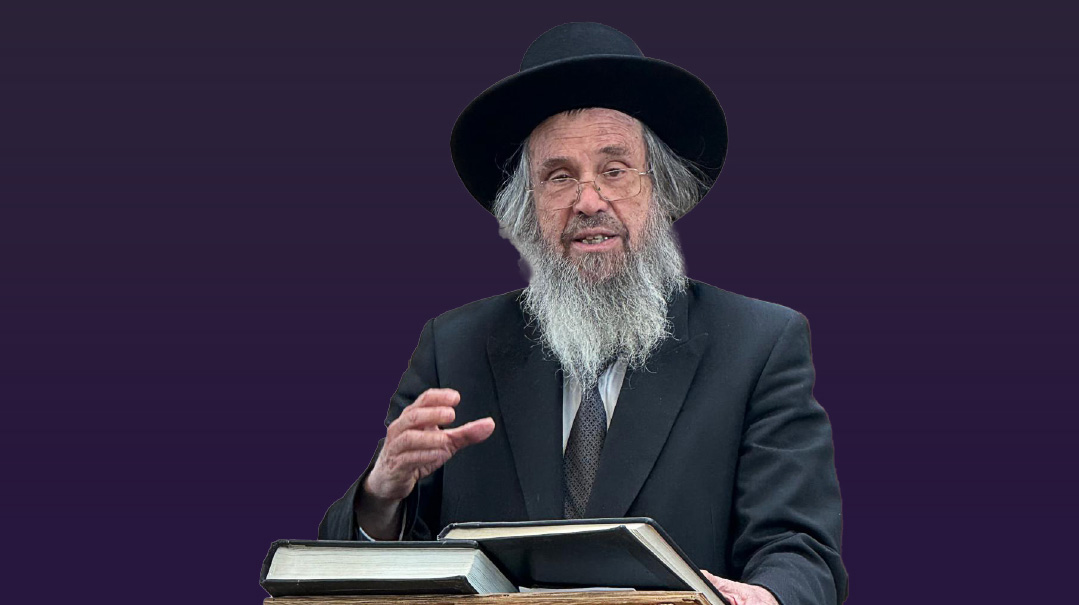Broken Yet So Whole
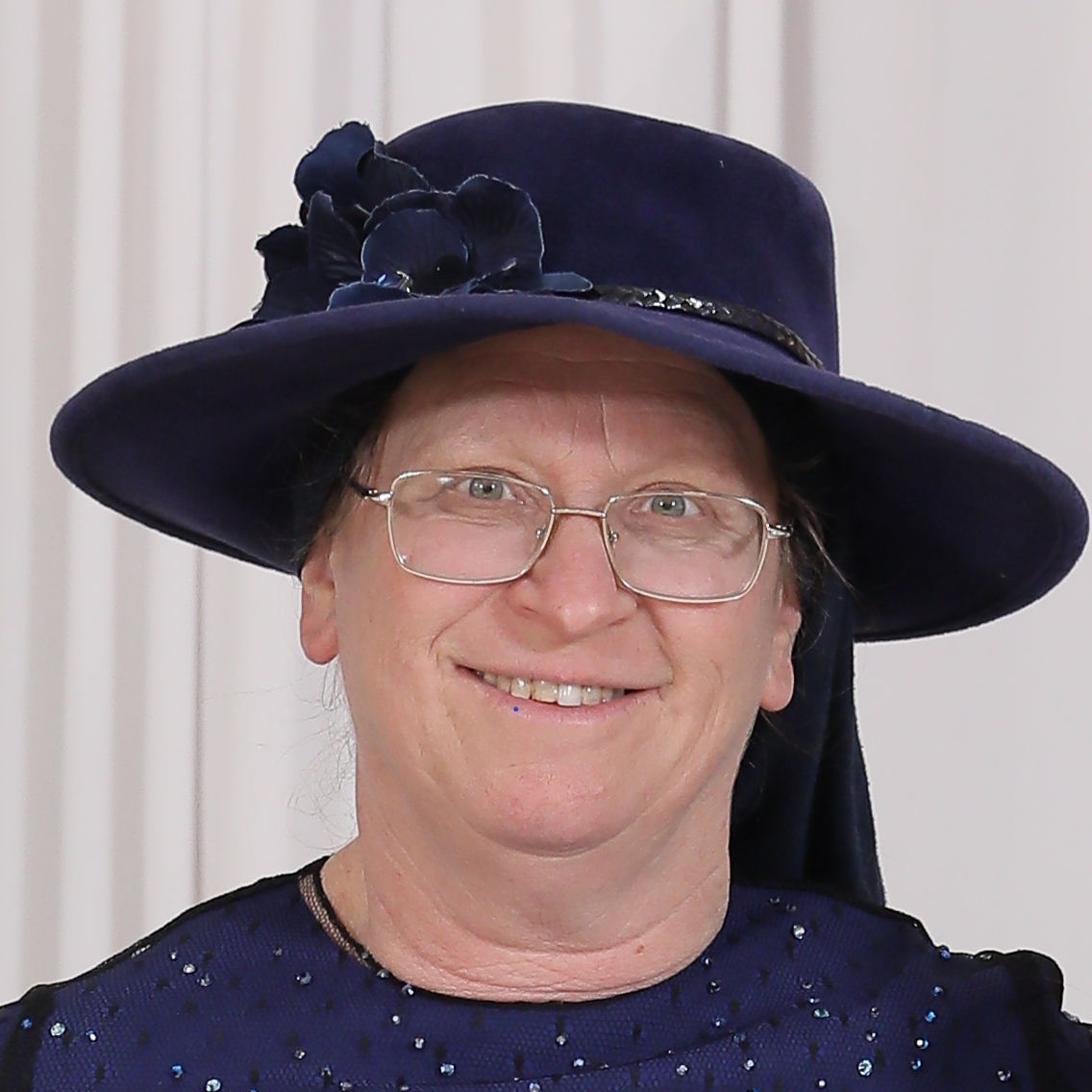
When Shloime Wertenteil was left for dead in a Chevron ambush back in 1976, his yeshivah buddies scooped him up and fled to safety, but would he ever walk, write, or have any kind of quality future?

F orty years is a metaphor for transition change and growth; what do we see when we look back 40 years — those of us who’ve lived past four decades? Do we know how we’ve changed? When Shloime Wertenteil looks back 40 years he sees near-death a broken body waiting to be rehabilitated a spirit desperate to succeed against the odds. And then he sees his journey fraught with challenges and victories and knows that just as he’s done his best his life can serve as an inspiration for others.
He flashes back to Erev Yom Kippur of 1976 in Chevron. The Jewish community of Kiryat Arba had been established on the outskirts of the City of the Patriarchs five years before but Jewish resettlement in Chevron proper was still a few years away. Still the area was under IDF protection and what better way to enter the Day of Atonement than with heartfelt prayers at Mearas Hamachpeilah the resting place of the holy Avos? But that morning Arabs were burning sifrei Torah in Mearas Hamachpeilah and trying to break into the ancient boarded-up Beit Knesset Avraham Avinu. Paratroopers called in to quell the violence later described Chevron as “hotter than the core of a nuclear reactor.”
Unaware of the tension in the city seven American yeshivah bochurim from Jerusalem set off to daven at Mearas Hamachpeilah. All of them would return traumatized but only Shloime Wertenteil came back in a coma. Yet after hovering on the brink of dying al kiddush Hashem he woke up determined to live al kiddush Hashem instead.
“We left our yeshivah Mercaz HaTorah right after davening so we could get to Chevron and back in plenty of time for seudas hamafsekes ” recalls Rabbi Zvi Teitelbaum one of ill-fated group who is today a rabbinic personality in Silver Spring Maryland. “On our way to the Mearah Arabs started throwing rocks at our taxi and we were coughing from the smoke of the burning tires. Near the shuk an Arab waved our driver to a stop and warned him not to go any further so he killed the engine while another friend Avraham went to ask the police if we should wait for an escort.
There were six of us sitting in the broiling car with the windows rolled up waiting for Avraham to return until Izzy (Sher) Shloime Wertenteil and I decided to go look for him. It was a little scary when six or seven Arabs crowded around us and started spitting. We flinched when one of them threw a rock so they started throwing more. We turned to go back to the taxi but to our horror the Arab driver who couldn’t care less what happened to us was driving away. We were running after him when we noticed that Shloime was missing. We turned around again to go look for him only to find 40 or 50 Arabs chasing us up the hill throwing rocks. Then we came across Arabs doing roadwork. They had a rock pile so that was clearly a dead end for us.
“I don’t know if our hearts were pounding more from terror or from the running when out of nowhere two Arabs appeared opening the door of a small grocery store and gesturing for us to go in ” Rabbi Teitelbaum continues replaying those minutes of horror so long ago. “Izzy thought it might be a trap but the rocks convinced us to duck inside. The shopkeeper locked the door and shoved us under the counter where we listened to the screaming and shouts from outside. A few minutes later an Israeli soldier ran in grabbed us and threw us into his jeep shooting to keep the mob at bay.
“When we got to the army base we found our friend Avraham dazed and covered in blood. He’d gone looking for Shloime in the shuk. All the Arabs had run away but he saw a body crumpled on the floor — wearing tzitzis so he realized he’d found Shloime. An army jeep took them to base and although Shloime was still conscious he didn’t recognize us. The medic not understanding how badly he was hurt didn’t want to send the only ambulance into the area so we carried Shloime to an army truck. A soldier threw a gun into my arms and told me to shoot at anyone who chased us.
“Shloime stopped breathing on the way to Jerusalem but because we weren’t in an ambulance no one was getting out of our way so a soldier climbed onto the roof of the truck and started shooting into the air. We got to Hadassah two hours before Yom Kippur.”
Returning to Life
Even after Shloime Wertenteil had been stabilized the doctors didn’t know if there was any chance he’d ever be able to walk talk or master other basic functions. His father spent a week in Jerusalem’s Hadassah Hospital clapping his hands near Shloime’s face and asking “Shloime can you hear me?” When he answered yes on the second day of Succos the entire ICU started clapping; he’d come out of his coma and he could still speak although his speech would always be slurred.
That first awakening was sweet to everyone but Shloime who was horrified to wake up in an unfamiliar body over which he had no control. He had no idea what had happened, no recollection of the attack the week before; his brain had blanked out the memories of everything that happened after the taxi pulled up to the yeshivah.
“The period I was in the hospital was extremely, extremely hard,” says Reb Shloime, a father of eight today who, over the last four decades, has learned to manage his remaining disabilities with a forward-thinking attitude that keeps propelling him onward. “I used to jog every day before Shacharis so I’d come into davening full of energy. All of a sudden I was reduced to total helplessness.”
Shloime’s face reddens as he transports himself back in time. “My friends were starting on shidduchim and careers, while I was learning to feed myself and walk. It was humiliating. I had to play with baby toys to regain dexterity. For a young person who’d been in perfect health, it was devastating.”
Confined to bed, in a ward of depressed patients who weren’t managing to come to terms with their new realities, surrounded by people speaking a foreign language, and unable to concentrate on a book, life became lonely too. Shloime asked his friends to scour the city for hashkafah tapes. They weren’t easy to come by in those days, but they were a lifeline, providing company, stimulation, and a booster shot of emunah. They were also a distraction.
“When my Iraqi-Jewish roommate’s large extended family visited, all loudly speaking Arabic at the same time, I pulled the blankets over my head so I could hear my tape. The staff rushed in in a panic when my bed started shaking — they thought I was choking — and they were surprised to find I was shaking with laughter at Rabbi Avigdor Miller’s humor.”
The tapes helped spark his faith and optimism — qualities that were in short supply in the hospital. They inspired him to work at his exercises with an energy that was unmatched in the ward, which in turn encouraged the staff to put more energy into his rehabilitation.
Within three months Shloime was independent enough to return to his parents’ home in Kew Gardens Hills. Back in Queens, he made progress with physical, occupational, and speech therapy, but Shloime was still basically feeling hopeless.
“When the electricity goes out, you go to the fuse box, flip up the switch that’s been tripped, and everything goes back to normal,” he recently told a yeshivah audience during an inspirational talk. “But what do you do when all the switches are down? Where do you start?”
Shloime started with learning. On Taanis Esther he got a call from his friend from Scranton Yeshiva, Chaim Yishai. “Shloime, can I come and we’ll learn together a little?”
He hadn’t learned since the attack, but the two of them opened a Mishnah Berurah and Shloime saw he could still do it. In the following months, they’d learn whenever Chaim Yishai had time. A little chesed goes a long way, Wertenteil remembers. That taste of “life as it used to be” fired him up and got him to thinking about going back to yeshivah, where he joined Chaim Yishai for morning seder, and later, to Queens College to study computer science. To this day, Shloime does an extra chesed on Taanis Esther in memory of Chaim Yishai’s own chesed, and as an aliyah for his neshamah. That summer Chaim Yishai, the boy who pulled Shloime out of the depths of despair, drowned in a freak accident.
Chaim Yishai gave Shloime his first boost, but it was still hard going all the way. A physical handicap almost always makes people assume there’s a mental handicap that goes with it, and Shloime suffered double discrimination from employers who were uncomfortable with both his yarmulke and his limp.
Every 20-year-old worries about parnassah and shidduchim, Shloime explains, but multiple handicaps multiply the tension. He used to hide his cane outside when he went for job interviews, since he wanted to be thought of as normal. In the 12 years he worked at Chemical Bank on Wall Street, he never told the story of the attack to his bosses, so they wouldn’t look at him
with pity.
Past the Handicap
Shloime became a regular at Rabbi Noach Isaac Oelbaum’s daf yomi shiur, and when he was 30, he made his first siyum haShas with the completion of Maseches Kiddushin. Rabbi Oelbaum gave Shloime a brachah: “As you were able to finish Shas with the learning of Kiddushin, may you be zocheh to be mekayeim.”
That week Shloime met his future wife on P’tach’s annual fundraiser cruise. Esther Goldstein of Far Rockaway, also 30 years old, had represented America in the International Bible Contest and made several risky, secret trips to Russia to smuggle Judaica to refuseniks. She’d been set up with doctors and lawyers, but was turned off because she felt they were too caught up in their careers. She was seeking someone with more connection and day-to-day awareness of Hashem in his life. And as an optometrist, used to looking into people’s eyes, she saw past Shloime’s handicap right into his neshamah.
Anyone who chooses to marry a handicapped person has to be able to see beneath the surface, and must convince her family to do the same. When Esther’s parents realized that the relationship was getting serious, they asked Rabbi Oelbaum to break it up, on the grounds that their daughter, who was perfectly healthy, didn’t need to be saddled with a handicapped man.
“I can understand your feelings,” he told them, “but my job is to make shidduchim, not break them.”
Four months after they met, Shloime and Esther were engaged. After the wedding, Shloime made a point of spending Shabbos with his in-laws, davening and going to shiurim with them. As they got to know him, they were able to look beyond his handicap and accept him for the sterling qualities honed out of a decade of mesirus nefesh.
In 1993, the Wertenteils moved to Israel with their daughter and infant son because they felt they’d have the best chance of bringing up idealistic children in the Holy Land. They settled in Rechovot, where four more children were born. But tragedy struck in 2000, during a family visit to the US. Esther died suddenly of an aneurism, leaving six small orphaned children. The grieving family stayed in America for a year, where both sides helped with the kids, until Shloime decided, in the face of all logic, to return to Israel. Five years later, he met Rivka Katz, a baalas chesed who was living in Har Nof. Rivka embraced the orphaned children, and the couple have an additional two children together.
“You can see the siyata d’Shmaya so openly in Shloime’s life,” says Rabbi Oelbaum. “People with alleh mailehs have trouble finding their bashert, but Shloime found his not once, but twice.”
With Whatever He Has Shloime is a driven man, following a grueling schedule that he’s kept to for over 25 years: up at five every morning to prepare for Shacharis, then swimming, to maintain his physical functioning. (Until ten years ago he bicycled everywhere, in all weather, because it was much faster than walking.) Then he goes to learn or take care of parnassah until supper, which the kids bring down to him while he waits in his handicapped scooter, to save time, and then off to daf yomi.
Years ago, he added an extra daf yomi shiur, which makes two, back-to-back. He didn’t skip it even when it made him late for his own daughter’s vort — on the week he made his fifth siyum haShas. When he finally gets home, he helps with homework and bedtime.
“I’m not saying it isn’t hard. It’s very hard,” Shloime sighs, using both hands to swing his legs, one at a time, to the side of his chair so he can stand. “I fall. I fall a lot. One time I fell on my face and my glasses got so twisted I had to get new frames. Then three days later I fell on my face again and destroyed my glasses again. Activities that are simple for most people require a lot of planning and care on my part.”
Although doctors were skeptical about his ever being able to write with his left hand again, Shloime, a lefty, refused to switch to his right. Since then, he’s filled sacks with chiddushim and notes on his learning.
“The Gemara (Nedarim 41a) says, ‘A person who’s been ill and gets better… regains the freshness of his youth.’ That must be the source of my energy,” Wertenteil ponders. “The energy and drive it takes to recover stay with you even after the physical crisis has passed.
“Everyone has his struggles,” Reb Shloime continues. “Our job is to grow from the struggle. Rav Yehonasan Eibeschitz points out how strange it is that man is called ‘Adam’ because he comes from adamah, dirt. Dirt has no aspirations. Wouldn’t you expect us to be called ‘neshamah’ instead? The neshamah defies the body’s desire to lie around and take it easy; like shemen, its cognate, it rises to the top. Calling us adam reminds us that we have to constantly work to overcome our physical nature and limitations, and our greatness is when we manage to.”
Is that an end in itself? One person thinks so. Dr. Harold Weingarden, head of outpatient physical rehabilitation at Tel Hashomer Medical Center, who has overseen Reb Shloime’s care for 25 years, says, “Shloime pays attention to his needs; swimming, doing physical therapy, and stretching his muscles, which are tightening with age. I think he’s the best rehabilitated patient with a severe injury that I’ve ever seen. To reach that level, he’s had to set his goalpost high.
“As Napoleon said, ‘A soldier who doesn’t aspire to be a general won’t be a soldier either.’ But he’s not chasing the unattainable. He goes after what he considers to be important in life, and he’s achieved it. He puts the emphasis on his whole life and not just on his rehabilitation.”
It’s reminiscent of what the great violinist Itzhak Perlman said after a performance in which he kept playing without pause even after a string broke: “You know, sometimes it is the artist’s task to find out how much music you can still make with what you have left.”
Bringing Out the Best
For a while, Reb Shloime was tutoring beginners in Ohr Somayach. “Because of my struggles, baalei teshuvah tend to connect with me very quickly. They’re also starting life over from scratch,” he says.
When his childhood friend Yitz suffered an autoimmune attack that left him paralyzed from the neck down, “remembering Shloime’s courage and stamina when he was in a similar situation got me through,” Yitz said.
Shloime’s confidence in siyata d’Shmaya is so strong that “one freezing cold morning, when it was still dark, I went downstairs, expecting to drive my handicapped scooter to shul. But it had been stolen! It was tempting to go back home and catch up on my sleep, but instead I got in my wheelchair, wheeled myself out to the sidewalk and waited for someone to come along and push me to shul.” And even though Shloime’s house is on a narrow side street, off another side street, someone did come along.
Is there darkness in all that light? Is he bitter? Does he wish he could wreak vengeance on the Arabs who crippled him? Not really. He sees darkness as the environment in which a seedling unfolds, a seedling that will defy the force of gravity and rise up out of the earth. “Shloime’s revenge is that he married and is building a family,” Rav Oelbaum said at the bris of the Wertenteils’ first son, Moishe, back in 1992.
Still, how does a handicapped man educate his children, discipline them, keep them in line? His oldest, Devorah Siegel, who works in Moreshet Seminary and is married to an avreich in the Mir, says that his personal example was so powerful, “seeing him always doing the right thing, even when it’s hard,” that she thinks they were naturally better behaved than children with a healthy father. His wife sees beyond his superficial disabilities and appreciates his inner core, which imparts another quality message. And having to be helpful and responsible to compensate for their father’s disability, she says, has made them more sensitive to other people’s needs.
It’s something Reb Shloime sees in others, too. He tells about the time he was having trouble stepping up onto a curb and one young man peeled away from his crowd of friends to help. “Someone in my family is handicapped, too,” the man said. A handicapped person who can accept help with grace brings out the best in others.
His triumphs are as inspiring as his determination to overcome obstacles. When he attends a wedding, dancers will surround his wheelchair and push him to the center. And at a simchah of his own?
“People are strange,” Shloime says with a smile as he reminisces about his own children’s weddings. “When we make a bris on a helpless baby, he screams and everyone smiles and says ‘mazel tov.’ But when I make a simchah, people start crying.”
Broken Luchos
A photo of Mearas Hamachpeilah hangs in the Wertenteils’ living room, a silent reminder of the place where everything changed. On the opposite wall is a painting of the Beis Hamikdash just before Yom Kippur’s morning avodah begins, a silent reminder of the time when everything changed.
Chevron is our chibur, our connection to the past, but the letters of Chevron also spell churban, destruction. For Shloime, Chevron was both a place of destruction and a place of connection to a new, unexpected, and uninvited future. And just as Yom Kippur encompasses the hope of forgiveness, renewal, and a better future with the bringing down of the Second Luchos, Reb Shloime likes to compare himself to the Jews in the desert. “I carry the broken Luchos and new, whole Luchos wherever I go.”
There are other pictures in the house. A newspaper clipping bearing pictures of those killed in the Har Nof massacre sits on his bedside table. On the fridge is a picture of the six bochurim murdered in Mercaz HaRav, so that anyone going to take ice cream will pause for a moment to mourn them. Reb Shloime wants to remember these people who suffered.
“Our sufferings are meant to teach us empathy for others who are suffering,” he says.
That’s why, when the radio announces a terror attack or an air-raid warning, or when they hear of a tragedy, they turn off the music — which is always playing in a house with small children — and put away the nosh. From his own vantage point of tragedy, Shloime Wertenteil has taught his family to be sensitive to the trauma of other victims and their families. Family friend Rivka A. lost her 17-year-old son last year. Her voice drops to an awed whisper when she says, “They didn’t buy treats for the whole week I was sitting shivah.”
A daf yomi siyum is always inspiring, but when a person has finished Shas five times? People see their neighbors and business associates celebrating their accomplishments and wonder if they could also do that. Maybe one day, they might think to themselves, when life is less hectic, when time is more free. Yet Reb Shloime, conspicuous in his handicapped scooter as he drives to and from shul and shiurim, swimming, and looking after his business interests, pulls the dreamers, the ones with the plans for tomorrow, back to today’s reality.
“If he can run after mitzvos in spite of his handicaps, if he can make five siyumim on Shas,” they say, “then maybe I can too.”
(Originally featured in Mishpacha Issue 657)
Oops! We could not locate your form.
